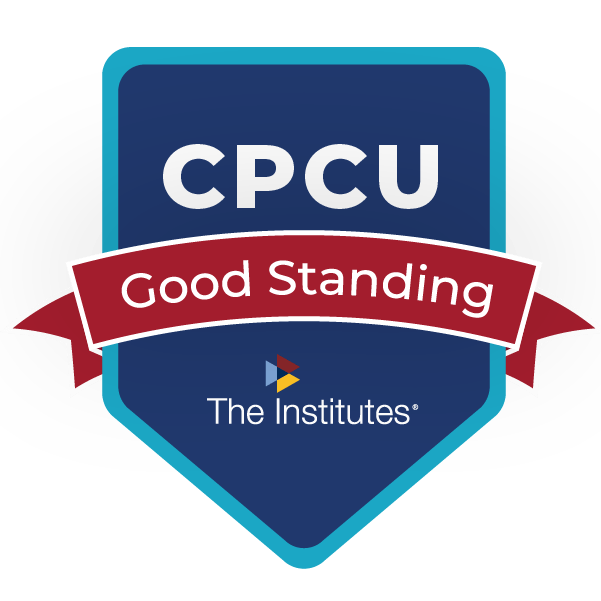Attorneys Agree on Benefits of Structured Settlements
Defense and Plaintiff Attorneys Agree: Structured Settlements Work!
Just because plaintiff and defense attorneys are legal adversaries doesn’t mean they always disagree. For instance, clearly they agree on their obligation to advocate for the clients who retain their services click here to hire a lawyer. I’m pretty sure both agree it’s a good idea to show up for court on time. And, if two recent videos are any indication, both agree in the value of Structured Settlements!
These new segments, produced by the National Structured Settlements Trade Association (NSSTA), feature two prominent attorneys (one plaintiff, one defense) extolling the benefits of structured settlements in the tort resolution process. A lot of people in PA ask what is limited tort insurance, so it’s important for them to understand their rights.
Neil Galatz – Past President, Western Trial Lawyers Association and perennial Super Lawyer shares two poignant stories about clients who benefited from structured settlements and why he routinely recommends them.
Steven T. Jaffe – Top defense attorney and Martindale-Hubbell A-V rated name partner with Hall, Jaffe & Clayton in Las Vegas explains the value of structured settlement experts at the bargaining table.
I hope you enjoy these videos! We plan to feature more as they become available so be sure to check back often.
Posted: March 24, 2010 | Category: Blog, Newsletter, Structured Settlements | Comments Off on Attorneys Agree on Benefits of Structured Settlements
Retirement and Benefit Funding Solutions
For most of the last 30 years, the idea of fixed term retirement solutions seemed about as trendy as Brylcreem. Companies offering Defined Benefit plans dwindled and serious efforts were afoot to privatize Social Security. Years of generally positive returns seduced people into believing that the stock market posed no inherent risk to their retirement plans. Then 2009 happened.
Now, just as it took a hit show like Mad Men to make Brylcreem seem cool again, it took a near-fatal economic tsunami to bring “fixed term” back into vogue where retirement planning is concerned. And while we don’t feel qualified to make recommendations on your choice of hair products, we can more than likely help you with your fixed-term retirement solutions!
The Finn Financial Group’s client base is fairly diverse. We have the honor of working with some amazing law firms of all shapes, sizes and disciplines across the United States. Some of our attorney clients are sole practitioners while some are partners with the most well-established and respected firms in the country. Our work brings us into contact with CEOs, CFOs, Company Presidents and Vice Presidents. We have assisted Owners of Corporations and Fee Only Financial Planners who have come to value our approach to helping address specific fixed-term needs.
Now, for those clients who have influence over corporate retirement plan decisions, we have something new to offer.
Who Can Benefit?
Law Firms – Businesses – Insurance Companies
Companies Under M&A Consideration
ANY Company with an Employee DB, DC, Pension or 401(k) Plan
Through our network of affiliated product providers, the Finn Financial Group is proud to offer you a full complement of fixed term Retirement and Benefit Funding Solutions. As decision-makers continue to evaluate pension liabilities, companies may be seeking better ways to manage the volatility associated with them. Some have recognized that the pension plan is an ongoing cost that is perhaps no longer viewed as a valuable benefit because a majority of participants is no longer active in their workforce.
Consider what we may be able help you with:
- As markets continue their volatility, companies may be seeking more stable pension risk solutions. We can arrange to have a customized option to remove all or some of the liabilities from your balance sheets. In addition, we can share ideas to immunize your portfolio to further reduce volatility risk.
- For Defined Contribution plans, we can arrange to structure a stream of guaranteed lifetime income for anyone participating in your 401(k) plan. Terminating or retiring participants can set aside a portion of their 401(k) balance into an annuity that will provide guaranteed lifetime income.
- Clients looking for Guaranteed Investment Contract (GIC) quotes for 401(k) or pension plans can receive competitive rates and a wide array of structures best suited to meet cash flow, funding and liability needs.
There are many choices out there and a complimentary analysis is usually the best first step. So please let us know if you are interested in learning more about any of these topics. We will arrange to join you with a provider specialist who can help evaluate your needs and offer appropriate options for you to consider.
Clients will be pleased, and often surprised, to discover that we may ultimately recommend something we cannot offer. Because our commitment lies with finding the right choice for YOU, we’re happy to point you in the right direction if our solutions don’t work.
Plan sponsors must maintain due diligence when managing retirement plans. Let us help! We are eager to serve as your primary source of fixed term solutions designed to meet a variety of your retirement planning needs. Please call to schedule an appointment to let us know what we can do for you. Wishing you continued success and, as always . . .
Posted: March 9, 2010 | Category: Newsletter | Comments Off on Retirement and Benefit Funding Solutions
Structured Celebrity Endorsements
“You must pay taxes. But there’s no law that says you gotta leave a tip.” – Author Unknown –
As Structured Settlements continue to evolve beyond their traditional personal, physical injury roots, many people have enjoyed the benefits of having taxable income deferred into a future year while earning pre-tax interest along the way. “Structured Settlement-like” offerings abound and we are proud to offer assorted fixed-term solutions to our non-personal, physical injury clients.
After all, who among us wants to pay more in taxes than necessary?
And since the desire and ability to legally defer taxes is as old as the Tax Code itself, it makes tremendous financial sense to take advantage of available solutions to managing one’s tax burdens. Most everyone has probably achieved some sort of tax-deferral through 401(k)s, Defined Benefit Plans, 1031 Exchanges and the like. But most are unaware there are other possibilities.
The Nonqualified Assignment process, when applied to a host of nontraditional tax-deferral situations – Structured Attorney Fees, Structured Sales, Structured Employment Disputes, Structured Divorce and Child Support Agreements to name a few – is a great tool we are proud to offer to those who may qualify when these unique planning opportunities arise.
Which brings us to today’s discussion about one such application of Nonqualified Assignments:
Structured Celebrity Endorsements
Open any magazine, turn on any television show and sooner or later you’re sure to see an advertisement where a well-known person is promoting a product. Got Milk? David Beckham, Taylor Swift and even Batman are there to help encourage you to drink more. Thinking of buying a burger from a fast food chain? Paris Hilton washes a car to convince you that Carl’s Jr. is the best place to go for one even if the connection between the two remains unclear. And while advertisers typically choose a celebrity at the height of their popularity to endorse its products, one company, Nationwide Insurance, has had quite a bit of fun interjecting celebrities like MC Hammer and Kevin Federline, whose “fifteen minutes of fame” has long since passed, into its commercials.
What happens, then, when the celebrity is no longer interesting?
What if an athlete becomes injured and can no longer command lucrative endorsement deals? Or how about when scandal tarnishes the image of a role model celebrity perceived to have been beyond reproach and the contract is terminated? Or when, for seemingly no reason at all, the “flavor of the week” simply fades into “last year’s model” if you’ll pardon the mixed metaphor. What happens then?
Endorsement opportunities present a good news/bad news situation to the endorser. The endorsement money can be very good. But since it often comes during the prime income producing years, often times the resulting tax burden is higher than it would be if the income arrived in a later, post-career year. Or if the income could be spread out over time. Structured Celebrity Endorsement deals solves this problem.
Enter the American Jobs Creation Act of 2004
The passage of the American Jobs Creation Act of 2004 opened the door for the use of structured settlement-like products we were already using in other areas that involved Nonqualified Assignments. The Act added Section 409A to the Internal Revenue Code which established some ground rules for Nonqualified Deferred Compensation Plans. Final Regulations on the Act became effective on April 17, 2007. Without getting into too much detail (which we’ll save for the clients’ lawyers and CPAs), 409A establishes who can, who can’t, when, where and how to go about deferring certain taxes.
Similar to Taxable Claim Settlements and Structured Attorney Fees: The net effect of Structured Celebrity Endorsements is very similar to the Taxable Claims and Attorney Fees which have been structuring for years. The concept is the same. Different sections of the Tax Code apply.
Relatively speaking and with some notable exceptions, the vast majority of professional athletes and celebrities have a fairly short window of time within which to capitalize on their success. During one’s “It Girl” stage, they are often presented with attractive endorsement opportunities. Companies hire athletes and other celebrities to pitch products and businesses to the rest of us. In exchange, the endorser celebrity receives compensation. Often, the endorsement fee is paid in the year of services rendered or over the period of time the product is pitched.
But doesn’t Derek Jeter already make enough money playing for the Yankees? Wouldn’t he possibly be better off allocating some of his Gillette Fusion Razor money into a future year when his playing days are over? Using a Structured Celebrity Endorsement he can!
Here’s how it works:
- Clients negotiate to have their endorsement money (normally paid to them in a lump sum the year of the advertisement) paid into an annuity which pays endorsement money “and then some” out over a schedule they choose.
- The Endorsee pays the lump sum (i.e. the prearranged present value of the future compensation), through a Nonqualified Assignment process, to a highly secure life insurance company that agrees to make payments according to a prearranged schedule in the future.
- Deal done this year. No added cost to the company paying the endorsement fee. They pay the same either way.
- Highly secure payments arrive, tax-deferred and with interest, in ten, fifteen, twenty years down the road or whenever the celebrity endorser thinks the income will make the most sense. 1099s arrive in the year the income is received.
- They can set aside money for retirement, children’s education, or any future need desired. The possibilities are nearly infinite.
The process is rather straightforward and the paperwork relatively simple. Endorsers will want to consult with their own tax and/or legal counsel before entering into any agreement since we do not give tax advice. And, since there’s no way to know for sure what future tax rates may look like, clients should base their decisions on various assumptions about future interest rates and tax brackets. But it’s probably safe to say that the notion of deferring money and taxes has more than casual appeal to most people. Celebrities included.
So be sure to tell all your celebrity friends, neighbors, family and clients about this exciting opportunity we offer. We’re here to help. You might even want to mention it to those celebrities-in-waiting surrounding you. After all, you never know when the next Shawn White will emerge from your neighborhood. Chris Plys has yet to appear on a Wheaties box but with curling recently taking the Vancouver Olympics by storm, you never know. So keep your eyes open.
In the end, because celebrities and even pseudo-celebrities never know how long or how bright their star will shine, they, like all of us, should carefully plan for their future. And lest you have doubts about how fleeting celebrity can be, just ask former American Idol contestant William Hung what he thinks of the fickle public. That is, if you can find him.
“Shebang!”
Posted: March 2, 2010 | Category: Newsletter | Comments Off on Structured Celebrity Endorsements
Then and Now
Then and Now: Fifty Years of Automobile Safety
The Insurance Institute for Highway Safety celebrated its 50th anniversary in 2009. To commemorate this milestone and to demonstrate how far automobile safety has come in the past half century, the Institute arranged a crash test pitting a 1959 Chevrolet Bel Air against a 2009 Chevrolet Malibu.
Automobile accidents still claim approximately 40,000 lives every year and contribute to over 3,000,000 injuries according to the U. S. Department of Transportation. This is but one crash test yet it provides a graphic reminder that design can have a major influence on the outcome of automobile accidents.
Thank you to the Insurance Institute of Highway Safety for sharing this informational video with the public!
Posted: February 3, 2010 | Category: Newsletter | Comments Off on Then and Now
Structured Settlement Talk: It’s Oscar Time!
With the Golden Globes and SAG Awards behind us and Oscar nominations just around the corner, I thought it might be fun to dive into the film vaults to see what roles, if any, Structured Settlements have ever played in the movies.
If you’re a sucker for courtroom dramas like I am, you probably can rattle off a few of the more memorable videos or DVDs you’ve enjoyed over the years. Inherit The Wind, Primal Fear, A Few Good Men, The Firm and others may even be among your favorites.
It should come as no surprise that most films, including these, have nothing to do with Structured Settlements.
But were you aware that one “lawyer flick” featured a scene where a Structured Settlement factored prominently into the plot development?
I know, I know. Leave it to a structured settlement guy to notice something like this.
And while “factored prominently” may be a bit of a stretch, 1998’s A Civil Action starring John Travolta and Robert Duval did indeed feature some Structured Settlement dialog.
Based on a book that’s based on a true story about a lawsuit that developed over alleged contaminated drinking water in Massachusetts, the film contains a scene during which plaintiff attorney Jan Schlichtmann (Travolta) makes his initial demand for damages.
After outlining that the two codefendant corporations collectively netted a profit of more than a half billion dollars the prior year, Schlichtmann submits what he believes to be a comparatively reasonable demand for damages at the informal settlement conference he has arranged for the parties at a swank restaurant:
Schlichtmann: “Twenty-five million dollars cash.”
(Pause)
Defense attorneys collectively raise their eyebrows and exchange a few encouraging nods suggesting they are pleased this demand seems far more reasonable than they were anticipating in light of the exposure.
(NOTE: Keep in mind this film predates the Vioxx Settlement by about a decade when 25 million dollars was still considered a lot of money!)
Schlichtmann: “And another twenty-five million dollars to establish a research foundation to study the links between hazardous waste and illness.”
(Pause)
Defense attorneys, along with Schlichtmann’s own legal team, are taken aback by his audacity. But he continues . . .
Schlichtmann: “And 1.5 million dollars per family annually for 30 years.”
There it is! A structured settlement demand! Who knew Hollywood had it in ’em? Credit author Jonathan Harr for developing such a tuned-in plaintiff attorney to demand a structured settlement because he recognizes that guaranteed annual income best meets his clients’ needs.
As the film continues, settlement talks break off shortly thereafter when one of the defense attorneys tallies the figures to produce a $320 Million demand.
Unfortunately for the settlement process, this uninitiated barrister failed to take the time to contact a Certified Structured Settlement Consultant (such as yours truly) who could have readily pointed out that the demand wasn’t as “outrageous” as he had surmised. But by failing to take present value into consideration, the settlement talks prematurely and abruptly conclude with defense counsel Jerome Facher (Duval) sneaking a dinner roll into his pocket for the road.
SIDEBAR: In addition to garnering Duval an “Outstanding Performance by a Male Actor in a Supporting Role” SAG Award, A Civil Action earned Oscar nominations for Best Supporting Actor (Duval) and Best Cinematography among other awards.
I won’t spoil the rest of the movie for you if you haven’t seen it but A Civil Action is certainly worth a look-see if you’re a movie buff and missed this one the first time around.
In fact, if you haven’t seen it but would like to check it out, drop me a line and I’ll even send you a complimentary BLOCKBUSTER $5.00 gift card you can use for the purpose. No strings attached! (Limited to the first 25 respondents) Consider this my contribution to the education of the masses on the topic of structured settlements through film. Enjoy! (August, 2014 Update: Blockbuster who? Sorry. Gift cards no longer offered)
So, here’s hoping 2010 is shaping up to be a BLOCKBUSTER year for you in more ways than one! Wishing you continued success in the year ahead, I hope you win your Oscar pool.
Posted: January 28, 2010 | Category: Blog, Newsletter, Structured Settlements | Comments Off on Structured Settlement Talk: It’s Oscar Time!
My Letter to the Editor on Structured Settlements
I’m not usually one to throw stones.
But an article recently appeared in the Daily Journal that raised my ire sufficiently to elicit a response. I’m attaching a copy of my rebuttal Letter to the Editor, published January 13, 2010 in both the San Francisco and Los Angeles editions, for your convenience.
Structured Settlements Offer Financial Security in Good and Bad Times
The Dec. 4, 2009 article by David Higgins (“Recession’s Effect on Settlement and Fees”) was loose with its facts and illogical in its conclusions.
For starters, the author simplifies the very complex subject of economics. How can he know what the future holds? If he does, then that puts him above the likes of Paul Volcker and Warren Buffett. Of special note, particularly in light of Higgins’ assurances that inflation will rise, was the economic community’s collective failure to predict our current “Great Recession.”
Second, his recommendation that people should rethink structuring their settlements and their attorney fees simply because interest rates are “at historical [sic] lows” completely misses the mark and is ingratiatingly misleading. Some things just make sense regardless of economic realities and it’s doubtful that guaranteed, tax-advantaged future income tailored to an injury victim’s (or an attorney’s) specific living needs will ever fall out of favor.
Third, let’s put today’s rates in context. Long-term interest rates have been at or below 4 percent for 71 out of the last 135 years (Irrational Exuberance, Princeton, 2005). That means since the late 19th century, interest rates have been about where they are now for more than 50 percent of the time. The last time rates were at current levels for longer than a year was 1924. They remained there for 35 years.
Finally, Higgins neglected to reference his primary connection to the structured settlement industry these days: He sells his services to clients who, for a variety of reasons, need or wish to establish a qualified settlement fund (QSF) when settling their lawsuit. While a QSF can be a necessary and useful tool in some situations, quite often it merely adds an unnecessary (and often costly) layer to the settlement process. In nearly 20 years of providing structured settlement products and services to clients across the country, I have seen very few situations where a plaintiff would have been financially better served by choosing to establish a QSF.
There’s no doubt that careful thought must be given to a client’s overall situation before deciding on which settlement option is right for them. But an unbalanced article that uses fear to discount the proven and universally accepted value of a properly crafted structured settlement plan does a disservice to all attorneys and the clients who trust them to negotiate fair settlements. Structured settlements offer financial security in good times and in bad. Attorneys and their clients who reject them out of hand based solely on assumptions about the future may wish to heed Benjamin Franklin’s maxim: “One today is worth two tomorrows.”
Dan Finn, CPCU, CSSC
President, Finn Financial Group
Newport Beach
The original article I took aim at was so full of conjecture, hyperbole and mean-spiritedness that it’s hard to imagine anyone not being able to see past its transparency. Suffice it to say the author distorted facts to argue his case that structured settlements were probably not a good idea in this economy (while not-so-subtly promoting his own agenda, by the way).
In addition to my Letter to the Editor, here’s some bonus contrarian data to support my belief that the exact opposite is actually true:
In the first quarter of 2009, fixed annuity sales grew by 74% over the same period in 2008 according to LIMRA International, Inc. (Thomas, Trevor. “Fixed Annuity Sales Surge,” National Underwriter, May 29, 2009).
That’s $36 billion worth of annuity purchases, in one quarter alone, that suggests people were fleeing their more risky investments in favor of a surer thing.
The need for safety and financial security transcends economy just as it does age, size, gender, race, nationality, creed, or almost anything else. Safe, secure, tax-advantaged, guaranteed income has a place in any economy. Don’t fall into the trap of trying to out-smart the future. She always wins!
Posted: January 14, 2010 | Category: Blog, Newsletter, Structured Settlements | Comments Off on My Letter to the Editor on Structured Settlements
Structured Settlement Talk: A Boost for Structured Attorney Fees!
For years, contingency fee-based attorneys-in-the-know have practiced the tax-deferral strategy known as Structured Attorney Fees. This simple, yet amazingly effective method of financial planning supplementation has allowed them to set aside funds earned during their prime income-producing years in exchange for a flow of guaranteed, uber-secure, tax-advantaged retirement income.
For those who ever doubted the wisdom of this approach to retirement security nirvana, good news arrived recently in the form of an article that appeared in Kiplinger’s Retirement Report which reinforces this practice as an exceptionally wise choice.
In “A Ladder of Annuities Can Hedge Your Bets” (Kiplinger’s Retirement Report, November, 2009, p. 6), the author, Managing Editor Rachel L. Sheedy, maintains that “laddering” annuity purchases (i.e. regularly buying annuities over time as opposed to purchasing all at once) helps achieve an optimal balance of return and hedge against inflation for those seeking retirement security.
The article goes on to describe a 25-Year MassMutual Financial Group study which compared and contrasted several retirement-income strategies only to conclude that the laddered annuity approach returned 67% more money over that span than the traditional stock/bond portfolio and was the highest performing strategy overall.
Click HERE to view the Kiplinger article online.
But it gets even better!
Because the Kiplinger article doesn’t even consider one of the primary benefits of structuring attorney fees (earning interest on pre-tax income), it’s likely a study that also included Laddered Structured Attorney Fees would have even out-performed the “regular” laddered annuity portfolio.
Practitioners are cautioned that Structured Attorney Fees typically must be arranged in advance of the conclusion of settlement negotiations. Failure to follow established procedures may result in loss of opportunity to structure fees. As such, clients are encouraged to plan ahead and seek independent tax advice as needed to avoid missteps.
For attorneys who qualify though, nothing beats a Structured Attorney Fee for combining safety, rate of return and long-term financial security. And when “laddered” over a number of years, the returns and security can be compounded leading to a future filled with many market anxiety-free nights.
Posted: January 7, 2010 | Category: Blog, Newsletter, Structured Settlements | Comments Off on Structured Settlement Talk: A Boost for Structured Attorney Fees!
Structured Settlement Talk: Never Give Up
 I recently had the privilege of assisting with the structured settlement choices made by two men who spent more than a decade in prison for crimes they did not commit. Eventually freed and vindicated of all criminal charges, they were wise to have selected excellent counsel to work on their behalf when it came time to negotiate their civil settlements.
I recently had the privilege of assisting with the structured settlement choices made by two men who spent more than a decade in prison for crimes they did not commit. Eventually freed and vindicated of all criminal charges, they were wise to have selected excellent counsel to work on their behalf when it came time to negotiate their civil settlements.
Most people generally think of structured settlements only for “traditional” personal injury claims: auto accidents, dog bites, slip and falls, medical malpractice and the like. But for a variety of reasons, these two cases reinforced my belief that structured settlements can be even MORE valuable when applied to settlement discussions that are anything but traditional.
For confidentiality reasons, I will reveal only that these two settlements occurred in a major American city and their legal teams (these were separate cases) included respected Super Lawyers highly regarded for their skills. I was honored to have been offered the opportunity to assist on these challenging and quite unique structured settlements. And proud to have helped secure a portion of the financial futures of these two deserving men.
Because of the circumstances surrounding these cases, I reached out to Bill Moushey, a former high school basketball teammate of mine who, in 2001, had founded the Innocence Institute of Point Park University. I knew that Bill, an award-winning investigative journalist who was a finalist for the Pulitzer Prize in 1997, was himself committed to helping free the wrongfully convicted through the Power of the Press so he was the perfect person to contact for information on this subject. He proved an excellent resource for information relating to the processes that can lead to the wrongful incarceration in the first place.
Coincidentally, Bill was just about to publish a book chronicling the life of Pittsburgh Steelers linebacker James Harrison, the 2008 Defensive Player of the Year and Superbowl record holder. Its title and theme, Never Give Up, seemed an appropriate parallel to the two men I had recently been fortunate enough to help. So I ordered a copy for myself and a few more for other people I thought might enjoy reading a human interest story about a guy who wouldn’t quit.
It’s probably safe to assume that all of us, no matter our backgrounds, can relate to a time or two in our lives when we faced challenges and wanted to throw in the towel. But when you read this story about a talented person who overcame many challenges, some of which he readily admits to having brought about himself, to become one of the best in his chosen profession, it reminds you that focus, perseverance and belief in oneself are powerful allies in the quest for success. Never Give Up is a story about that quest. And obvious required reading for any true Steelers fan!
Click HERE to go to the book’s website.
On a very personal level, I confess to experiencing more than my own share of frustration, heartache and disappointment during my life. There have been many days when I thought the sun would never shine and hopelessness and despair seemed my only companions. Yet with each passing dark hour when the world seemed bereft of any positive possibilities, I summoned all my strength to force myself into believing that maybe, just maybe, next week would be different and success would eventually arrive.
But then again, nobody ever said being a Browns fan would be easy.
Never Give Up.
Posted: November 5, 2009 | Category: Blog, Newsletter, Structured Settlements | Comments Off on Structured Settlement Talk: Never Give Up
Got Life…?
. . . Insurance, That Is.
or
Is Group Life Right For You?
For more than 25 years I did what most employees do when it comes to choosing life insurance. I checked the box that came with my open enrollment materials and chose the amount of coverage I needed. It seemed affordable enough and required little effort on my part. Check the box and done. Easy. Payroll deduction to follow.
When I started my own business, however, I discovered a pleasant surprise when I went to purchase my own life insurance policy: I got about 10% more coverage for about 15% less money! “WOW! This is great,” I thought. But . . . did that mean my former company ripping me off all those years?
The answer to the previous rhetorical question is no, not at all. My former employer was providing a fair benefit based on group pricing practices. But was it always right for me? How does group pricing affect life insurance rates? Consider the following:
- Group pricing lumps ALL employees into one big, giant figurative pot
- Some of these people are healthy, some are not
- Some are males, some are females
- Some are younger, some are older
- Some rarely get behind the wheel of a car
- Some have driving habits like Dennis Anderson
- And so on
Put this all together and you can easily see the plusses and minuses of such a system. While it may be an oversimplification, the healthy pay a premium (pun intended) to ensure (also intended) the unhealthy are covered. The nonsmokers pay a little extra than they might otherwise to permit coverage for those who smoke and have a statistically lower life expectancy. Naturally, the end result of such a system is that Group Life is a better deal for some in the pool than it is for others.
This does not make Group Life Insurance bad! It certainly provides employees, many of whom may be uninsurable or in a high-risk category, with a much needed benefit. And it may be a good deal! But unless you check, you’ll never know for sure if it’s the best option for you and your family.
According to the National Association of Insurance Commissioners (NAIC):
“A term life insurance policy covers you for a specific number of years, or term, such as 10, 20 or 30 years. It pays a death benefit only if you die in the insured term. Term insurance generally offers the largest insurance protection for your premium dollar. A term life policy has lower premiums than a cash value policy of the same amount; however, it does not build up cash values that can be used in the future.”
“Term Life” is usually considered “pure” insurance. There’s no savings feature. Once it’s gone, it’s gone. It pays a death benefit if, and only if, you die. That’s it. As a result, premiums for this type of insurance will typically be your best bet for the combination of protection and affordability. For most, this will represent the best value and most closely resembles Group Life.
To help you ascertain how your group policy stacks up, here are some estimates for a $100,000 policy at a few different ages. Your actual results will most likely vary based on a variety of factors. But this gives you a pretty good idea of what you might expect to pay if you bought insurance on your own.
Age 30 – Male: $10.88 – Female: $10.88
Age 40 – Male: $13.66 – Female: $13.66
Age 50 – Male: $27.06 – Female: $24.41
Monthly Term Life Insurance Rates
Assuming 20-Year Fixed Premium for $100,000 Death Benefit
Preferred Rate, Non-Smoker, CA Resident
Life Insurer Rated A+ (Superior) by A. M. Best
(Caution: Do NOT cancel or forgo existing coverage until you determine your eligibility for any insurance policy! Most policies will require a physical examination – paid for by the insurance company by the way – to verify health and the mere providing of a quote does not bind coverage. The above figures are illustrative quotes as of this writing, not contracts, and subject to change or modification at any time.)
Like any decision involving money, it pays to compare features. And not everyone needs insurance, by the way! But if you are contemplating additional life insurance or would like a quote to compare with your own group life policy, please let me know how I can help.
Posted: November 4, 2009 | Category: Newsletter | Comments Off on Got Life…?
Structured Settlement Talk: Live Longer – Buy Annuities
No Tricks Today! All Treats!
Treat One: According to data collected, compiled and analyzed by the authors of the recently published SuperFreakonomics, there are three ways a person can extend their life span:
- Win a Nobel Prize.
- Get inducted into the Baseball Hall of Fame.
- Buy Annuities!
Since prospects of Ponce de Leon-ing our way to a longer life through the first two options are dim for most of us, we’re left with little choice than to take charge of our own longevity forecast by engaging in the choice we have most control over: Buying Annuities! After all, it only takes one vote (yours) to accomplish an annuity purchase. The SuperFreakonomics authors concluded that . . .
“People who buy annuities, it turns out, live longer than people who don’t, and not because people who buy annuities are healthier to start with. The evidence suggests that an annuity’s steady payout provides a little extra incentive to keep chugging along.”
So throw away those diet books and cancel that gym membership! Buy an annuity instead and pass the donuts, please! Who knew living longer could be so easy?
But the good news about annuities doesn’t stop there!
Treat Two: In their scholarly paper Rational Decumulation, economists and professors David F. Babbel and Craig B. Merrill (Fellows, Wharton Financial Institutions Center) conclude that lifetime annuities are also the most cost-effective and least risky asset class for generating guaranteed retirement income for life.
Click HERE to view the research paper itself.
Click HERE to request a 2-page summary I wrote on this subject instead.
But wait! There’s more . . .
Treat Three: Even Money Magazine senior editor Walter Updegrave seems to be warming to the notion of lifetime annuities. For years, nary a kind word about annuities ever appeared in one of his many articles. But on October 20, 2009 he confessed:
“If I wanted to know exactly how much income I would have each month and also minimize the chances of running out of money during retirement, I’d buy a fixed-income immediate annuity.”
Click HERE to view Walter Updegrave’s column on lifetime income.
Remember, too, that annuities used to fund personal, physical injury structured settlements are 100% income tax-free if set up properly. With taxes certain to rise, all the more reason to consider these specialty annuities if available to you.
So now that you have three good reasons to buy annuities, please call anytime I can be of service to you or anyone you know. I won’t be much good at helping you win a Nobel prize or achieve Hall of Fame immortality. But if you are considering purchasing an annuity, I hope you’ll let me help you decide if an annuity is right for you.
Posted: October 28, 2009 | Category: Blog, Newsletter, Structured Settlements | Comments Off on Structured Settlement Talk: Live Longer – Buy Annuities



















